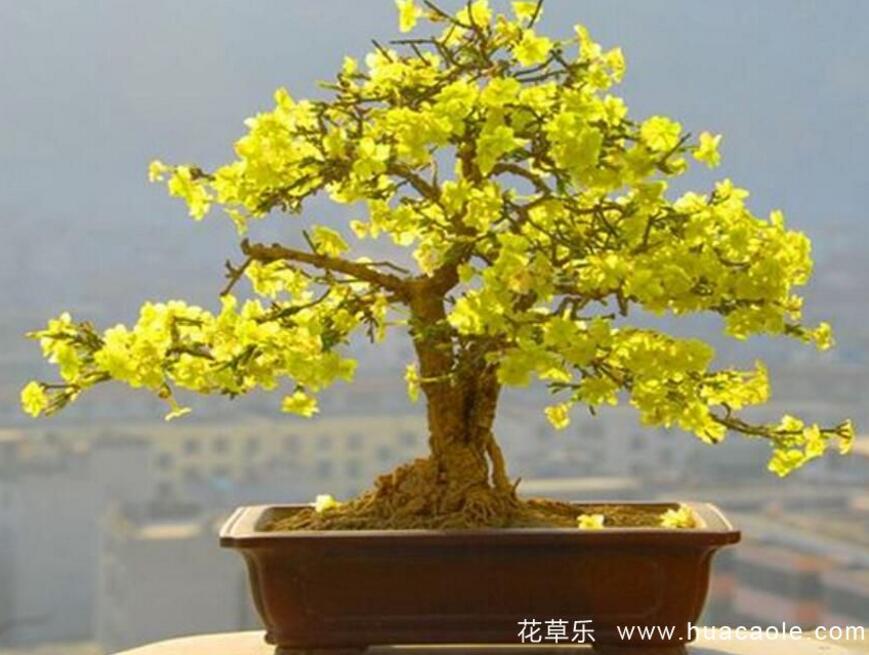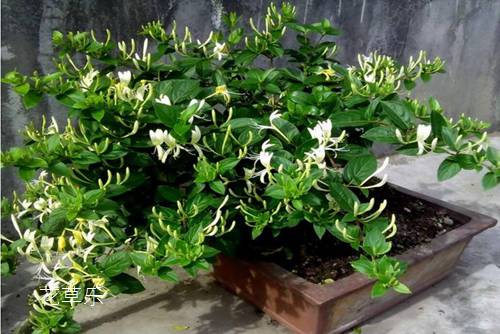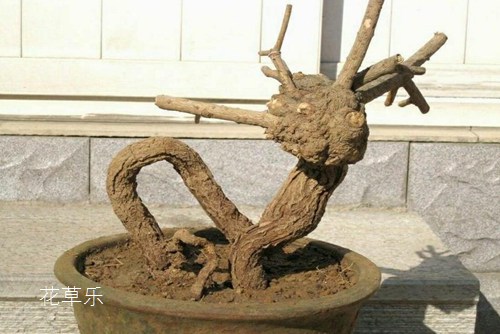How to raise primroses? Maintenance and management of primrose bonsai
Primrose, dignified and elegant, the flower has a faint fragrance, golden yellow, the outer edge has a blush, its flowering period is from February to April, the earliest among the flowers, and then ushered in the flowers to welcome the arrival of spring. People who like to grow flowers all like to raise a primrose bonsai at home to welcome the arrival of spring in the day of bidding farewell to the old and welcoming the new. Those who do not raise primroses can go to the flower market or search for pictures of primroses to enjoy and experience the first spring brought by primroses. How to raise primroses? The following flowers and plants share with you the knowledge of conservation and management of primrose bonsai.
How to raise primroses? Maintenance and management of primrose bonsai

Primrose is strong in germination, resistant to pruning, easy to tiller, and the trunk is not easy to be stout. Therefore, it is only suitable to make miniature or small bonsai, which can choose to grow for many years, the root is curved, the trunk is simple, and the branches are natural.
1. Pruning. Flower buds begin to differentiate in early October. Pick the heart at the right time to maintain a beautiful heel. Stop pruning at this time. In early November, one pruning should be carried out before flowering, and the vigorous growing branches, overlong branches, parallel branches, cross branches and disorderly branches should also be pruned in time, and those branches that are too dense should be pruned in time, so that the nutrition is concentrated, the flower buds are full, and the branches bloom in early spring. After flowering, plastic pruning and appropriate climbing should be carried out according to the needs of the shape.
2. Soil. The soil of spring flowerpot should be sandy loam with good drainage performance, and enough base fertilizer should be applied. When turning the basin and changing the soil, replace it with loose and fertile new soil. When turning the basin to remove the root soil, the root bending, climbing, modeling to shear as the main tie as the auxiliary, mostly into the root type or cliff type. Make the root lift, gradually form the tree potential of hanging claws and exposing roots.
3. Flowerpot selection. The choice of flowerpots should be adapted to the shape of the tree and the size should be appropriate. Generally equipped with round or drum-shaped, square, polygonal shallow basin, cliff type planted in a thousand-barrel or high-foot basin.
4. Fertilization. When nitrogen, phosphorus and potassium compound fertilizer or rotten organic fertilizer is applied during the growing period, the management of water and fertilizer should be strengthened during bud pregnancy, that is, liquid fertilizer rich in phosphorus and potassium should be applied every 10 days to promote beautiful flowers and green leaves, which is beneficial to ornamental. However, less nitrogen fertilizer should be applied when pregnant buds, so as to avoid excessive growth of branches, proliferation of lateral branches, overgrowth, and the phenomenon of little or no flowering. At flowering stage, more thin fertilizer should be applied to prolong flowering period.
5. Watering. Water once in the morning and evening in summer, once a day in spring and autumn, and less in winter to keep the basin moist. At ordinary times, bonsai should be placed on the green balcony where there is plenty of light, and when blooming, it can be moved into the room to enjoy.
6. Pest control. The main pests of primrose are big coir moth and aphids. Control methods of large coir moth: often check potted plants and find that insect cysts are removed and destroyed in time; if parasitic bees are found around them, they should be protected; spray with 1000 times of phoxim EC. Aphid control: when there are few aphids, they can be scraped off directly with bamboo. When there is a high incidence of aphids, spray aphid mite cream or aphid lice to kill, pay attention to the selection of different agents for control every year, aphids have strong drug resistance, long-term use of a pesticide, aphids produce antibodies.
Time: 2019-04-24 Click:
- Prev

How to raise honeysuckle? Maintenance and Management of Honeysuckle Bonsai
Honeysuckle likes light, can also tolerate shade, cold, drought and moisture, and does not have high requirements for soil. Both acid and alkaline soil can grow, but it grows better in wet, fertile, loose and deep sandy soil basin soil. It has developed root system and strong sprouting power, as long as it can manage water and fertilizer well, provide sufficient light, and trim the shape properly.
- Next

How to make a flower of spring flower
Jasmine flower color end in the beautiful, temperament extraordinary, but also has no fear of cold Wei, do not choose terroir, strong adaptability. Spring jasmine blossoms earliest among all flowers. Its tender green branches sway with the wind. Its yellow flowers are in full bloom. They are like stars dotted all over the branches. They are really lovely.
Related
- Fuxing push coffee new agricultural production and marketing class: lack of small-scale processing plants
- Jujube rice field leisure farm deep ploughing Yilan for five years to create a space for organic food and play
- Nongyu Farm-A trial of organic papaya for brave women with advanced technology
- Four points for attention in the prevention and control of diseases and insect pests of edible fungi
- How to add nutrient solution to Edible Fungi
- Is there any good way to control edible fungus mites?
- Open Inoculation Technology of Edible Fungi
- Is there any clever way to use fertilizer for edible fungus in winter?
- What agents are used to kill the pathogens of edible fungi in the mushroom shed?
- Rapid drying of Edible Fungi

